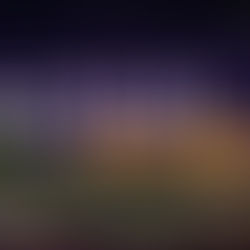Madra Catacombs | Golden Sun | Orchestral Cover
Time to delve into the ruinous depths underneath Madra - the Catacombs! - now arranged for orchestra.
Feel free to check out the landing page with links to the recording, sheet music and more!
This includes individual part scores for:
Full Score
Oboe
Bass Clarinet in Bb
Bassoon I. II.
Contrabassoon
Horn in F I. II.
Trombone I. II.
Bass Trombone
Tuba
Drum Kit
Timpani
Bass Drum
Suspended Cymbal
Tam-tam
Shaker
Marimba
Vibraphone
Piano
SATB Choir
Violin I
Violin II
Viola
Violoncello
Contrabass
If you are one of my Patrons, you can now find the MIDI, XML and SIB files I created for this arrangement now available to download from Patreon!
Arranger's Note:
A tricky track to orchestrate, owing to the surprisingly sparse original material, how did Sakuraba convey the dark, empty depths of a catacomb through music?
The most characteristic feature of this track is the recurring brassy "blasts" (0:02, 0:11, etc.). Built out of a bare 5ths chord in 2nd inversion (e.g. the 5th is the bottom note; G-C), this chord evokes an incredibly dark sound not only from the medieval-sounding perfect 4th interval (G-C), but also from its low register (placed here in low winds, low brass, low piano, bass drum & tam-tam - a dark & muddy combination).
Accompanying these "blasts" are some low string chords moving together (in chordal homophony), which I doubled here in a men's choir for depth. These chords are remarkably dissonant, utilizing semitonal clashes (e.g. G-A♭-E♭) and various added-note harmonies (Cm7 at 0:02, B♭7 at 0:05, Gm7 at 0:07, etc.). Altogether this creates a gloomy texture - a fine choice for an old catacomb.
Improvising on top of this is an ad lib. marimba run (0:07), confirming our tonality as being C Aeolian (C-D-E♭-F-G-A♭-B♭-C). Coupled with this is an improvisatory vibraphone statement, with the motor on to complement the "unknown" atmosphere through an unusual oscillating effect.
We get a more traditional melody by 0:20 - originally in the violins but now doubled in the oboe - which sheds some light into the track. This is further accompanied by the marimba and vibraphone with various arpeggios and further swift runs. Harmonically, it is nearly identical to the opening (0:02 - 0:19).
The B section commences at 0:37 with some new harmonies (Cm - E♭Maj7 - D5 - B♭sus4) and new countermelody in the bass clarinet. As the melody sweeps upward, the women's choir take over, supported by octave violins and oboe countermelody. Underneath this, the tuba, marimba and piano provide a syncopated (off-beat) accompaniment of bare 5th chords (C-G).
At 0:55, the original track was reduced to simply the drums and marimba material, but here I developed it to add a slowly growing chord emerging out of the gloomy atmosphere to prepare us for the loop.

































Comments